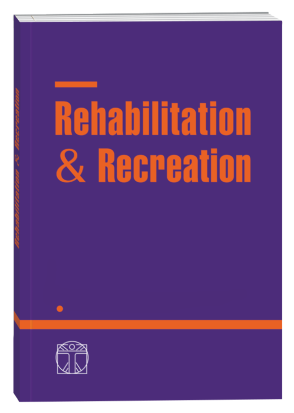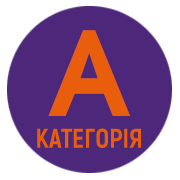THE RELATIONSHIP BETWEEN PHYSICAL DEVELOPMENT INDICATORS AND THE POWER OF ANAEROBIC ENERGY SUPPLY PROCESSES IN WOMEN OF DIFFERENT SOMATOTYPES
DOI:
https://doi.org/10.32782/2522-1795.2025.19.2.16Keywords:
anaerobic performance, fat, muscle, early adulthood, womenAbstract
Anaerobic energy supply plays a key role during physical efforts of maximal and submaximal intensity. Therefore, studying the factors that influence the ability to perform physical activity through anaerobic metabolism is relevant. It has been proven that individuals of different morphological types differ in both aerobic and anaerobic performance of the body, as well as in the manifestation of physical qualities. Active research is being conducted to identify relationships between physical development indicators and functional fitness parameters in athletes. We did not find data in the literature regarding the correlations between physical development indicators and anaerobic performance indicators in women aged 25–35 with different somatotypes. The aim of this study is to establish the specifics influence of body weight, height, fat and muscle components on anaerobic performance in women aged 25–35 with different somatotypes. The power of anaerobic alactic energy supply processes was determined using the 10-second Wingate test. The power of anaerobic lactic energy supply processes was determined by using the 30-second Wingate test. It was established that the degree of correlation between indicators of physical development and indicators of anaerobic performance of the body in representatives of different somatotypes differs significantly. A high degree of correlation was found between the absolute values of WAnT 10, WAnT 30, and body mass, height, and BMI in women with ectomorphic and balanced somatotypes. For relative values, a high correlation was found only in women with a balanced somatotype – between WAnT 30 and body mass. Conclusions. Anaerobic performance indicators in women with endomorphic and endomesomorphic somatotypes show significantly weaker correlations with physical development indicators compared to women with ectomorphic and balanced somatotypes. Body mass, height, and BMI may serve as predictors of high anaerobic performance in women with balanced and ectomorphic somatotypes. The percentages of body fat and muscle do not have a significant impact on the anaerobic capacity of women across all somatotypes.
References
1. Alkandari, J.R., Barac Nieto, M. (2016). Somatotype Components, Aerobic Fitness and Grip Strength in Kuwaiti Males and Females. Health, 8, 1349–1355. https://doi.org/10.4236/health.2016.813135
2. Carter, J. (2003). The Heath-Carter antropometric somatotype. Instruction manual. Department of Exercise and Nutritional Sciences San Diego State University. CA: U.S.A., 26 p.
3. Dotan, R., Bar-Or, O. (1980). Climatic heat stress and performance in the Wingate Anaerobic Test. European Journal of Applied Physiology and Occupational Physiology, 44, 237–243.
4. Dulo, O., Furman, Y., Hema-Bahyna, N. (2022). Gender and Somatotypological Peculiarities of Indicators of Aerobic and Anaerobic Productivity of Energy Supply of the Body in the Post-Pubertal Period of Ontogenesis in the Residents of the Zakarpattia Region. Wiadomości Lekarskie, 75(10), 2359–2365. https://doi.org/10.36740/WLek202210108
5. Froese, E., Houston, M. (1987). Performance During the Wingate Anaerobic Test and Muscle Morphology in Males and Females. J Sports Med., 8(1), 35–39. https://doi.org/10.1055/s-2008-1025637
6. Furman, Yu., Miroshnichenko, V., Boguslavska, V., Gavrilova, N., Brezdeniuk, O., Salnykova, S., Holovkina, V., Vypasniak, I., Lutskyi, V. (2022). Modeling of functional preparedness of women 25–35 years of different somatotypes. Pedagogy of Physical Culture and Sports, 26. 2, 129–136. https://doi.org/10.15561/26649837.2022.0206
7. Hasmyati, S., Rusli, A., Chaerul, M., Ruslan, F. (2025). Somatotype and body mass index as predictors of aerobic and anaerobic capacity in young women. Journal of Physical Education & Sport, 25(3): 653–660. https://doi.org/10.7752/jpes.2025.03070
8. Kale, M., Akdoğan, E. (2020). Relationships between body composition and anaerobic performance parameters in female handball players. Physical Education of Students, 24(5), 265–270. https://doi.org/10.15561/20755279.2020.0502
9. Kenney, L., Wilmore, J., Costill, D. (2022). Physiology of Sport and Exercise. Human Kinetics, 648 р.
10. Kozina, Zh., Borysenko, I., Grynyova, V., Masych, V. (2021). Influence of sports specialization and body length on orthostatic test indicators of students majoring in “Physical Education and Sports”. Journal of Physical Education and Sport, 21(3)200, 1580–1586. https://doi.org/10.7752/jpes.2021.03200
11. Miroshnichenko, V., Furman, Yu., Brezdeniuk, O., Onyshchuk, V., Gavrylova, N., Salnykova, S. (2020). Correlation of maximum oxygen consumption with component composition of the body, body mass of men with different somatotypes aged 25–35. Pedagogy of Physical Culture and Sports, 6, 290–297. https://doi.org/10.15561/26649837.2020.0603
12. Miroshnichenko, V., Kalabiska, I., Shvets, O., Kovalchuk, A., Halaidiuk, M. (2024). Relationship between indicators of physical development and indicators of anaerobic productivity of the body of women 25–35 years old. Health, Sport, Rehabilitation, 10(1), 111–121. https://doi.org/10.58962/HSR.2024.10.1.111-121
13. Neha Рarve, Madhuri Kulkarni, Hemangini Sarambekar. (2015). Study of Static Anthropometric Measurements and Body Somatotypes of Women. International Journal of Scientific and Research Publications, 5(9), 100–115.
14. Pei Yang, Jing Tang, Yi Shu, Zi-Ling Liao, Si Li, Ting-Ting Tu, Zhen-Lin Li. (2022). Using Quantitative Computed Tomography to Study the Correlation Between Physical Composition and Grip Strength in Young People. Sichuan Da Xue Xue Bao Yi Xue Ban., 53(6), 1081–1089. https://doi.org/10.12182/20220860101
15. Zera, J., Nagle, E., Connell, E., Curtin, E., Marget, W., Simonson, A., Nagai, T., Lephart, S. (2022). Gender Differences and the Influence of Body Composition on Land and Pool-Based Assessments of Anaerobic Power and Capacity. Int. J Environ Res Public Health, 19(13), 7902. https://doi.org/10.3390/ijerph19137902
Downloads
Published
How to Cite
Issue
Section
License

This work is licensed under a Creative Commons Attribution-NonCommercial-NoDerivatives 4.0 International License.





